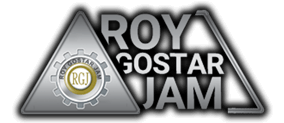Zinc oxide , called in the ancient books of Tutia, is an inorganic compound with the formula ZnO in the form of a white powder that is insoluble in water.
Industrial uses
This compound is used in the manufacture of many materials in industry such as plastics, ceramics, glass, cement, rubber (car tires), softeners, paints, waxes, adhesives, foods, batteries, etc. Zinc oxide powder has many uses. Its main applications are summarized. Most applications use the zinc oxide reaction as the constituent of other zinc components. Its application in materials science includes high refractive index, high thermal conductivity, antibiotics and UV protection materials. It is used in a similar way to materials such as plastic, ceramic, glass, wood, cement, paint, grease, ointment, glue, seal, pigment, battery, circuit used in fire extinguishing and many other cases.
Medicinal uses
In medicine and health, this compound called zinc oxide is used in baby powder, skin ointments, sunscreen, anti-dandruff shampoo, etc. Zinc oxide ointment in the treatment of skin lesions prone to infection such as burns, eczema, baby foot burns, scratches and insect bites. It is used for mild skin inflammation as well as in combination with calamine as an anti-itch.
Zinc oxide has moisturizing, antibiotic and deodorant properties. It is also used in the composition of sunscreens due to its anti-sebum and UV reflecting effects.
Production
In industrial consumption, 105 tons of zinc oxide is produced per year by the three main methods mentioned below.
Indirect method:
Zinc (Zn) is liquefied in a special graphite smelting vessel and converted to steam at a temperature above 907 ° C. Zinc vapor reacts with oxygen (O 2) in the air to form zinc oxide (ZnO). The formed oxide is cooled and collected. This method was discovered in 1844 by the French LeClaire. The result of this method is compressed zinc oxide with a size of 0.1 to a few micrometers. Most of the zinc oxide produced in the world is from this method.
Direct method
Wet chemical process method



